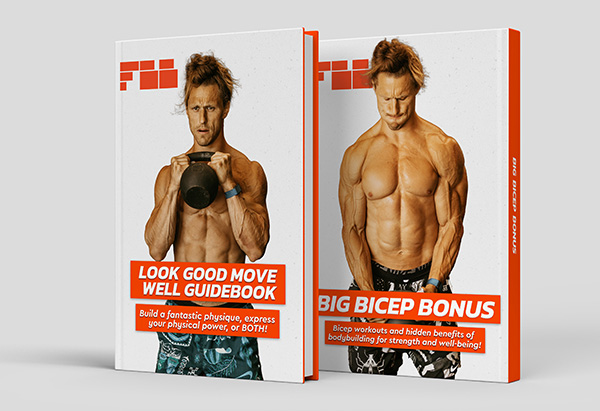How I Fixed My Decade of Injuries
I was 20 when injury caught up and I became “Patient X.”
I looked great – an athletic Division 1 soccer player, sub 7% body fat, abs and visible muscle everywhere. But that was just the surface.
It was a typical Friday at the UC Berkeley gym. Or maybe it was a Tuesday. Every day was alike because I simply never rested. I was addicted to working out, pushing and constantly looking for ways to do more.
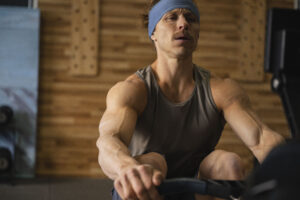
Robust, strong, and resilient – or so I thought. I thought I knew better than a program, too. I had written an extremely hard training plan for myself and some friends that was way over the top. And this was our last workout together before the winter break, so we went absolutely ham.
I paused at the Leg Press, debating how heavy to go. More? Always more. I loaded up and climbed in.
We now know our brains aren’t fully developed until age 25, so perhaps that was a factor. Stubbornly clinging to a year-plus caloric deficit definitely didn’t help. Nor did the fact that I was a pre-med student and I was severely depressed.
I thought I had crushed it by the end of my set – until I stood up and walked away.
Our bodies, despite being robust and resilient, have a threshold to stress. The hot feeling in my back th
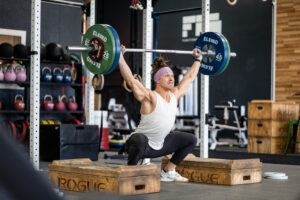
at had been nagging for weeks roared to life. My leg began zinging and I started feeling weak.
All semester I had been shadowing surgeons at school. Numbness and tingling? Check. Weakness and pain? Check check. Oh shit – I’m THAT GUY presenting with a classic lumbar herniation.
This back injury sent me into months of recovery and a forced break from the gym, compounding my misery at the time. So you think I would have learned quickly. But the next decade of my life was plagued by injuries large and small, with periods of ups and downs.
This decade also spanned my competitive CrossFit career, where a different type of stress caused a cascade of nagging injuries: training stress.
I was eager to improve in all things CrossFit and I pushed my intensity hard each and every day. I had more of the other factors in my life in order than my early 20’s. I was eating right, I wasn’t depressed anymore, and I felt like I had purpose and fulfillment. So instead of having stress coming at me from every direction, I simply had one major stress – training day in and day out. I dealt with the recurrence of my back injury, ongoing knee pain, neck injuries, and ongoing shoulder aches.
In both phases of my life my body had a certain level of resilience. That level of resilience was defined by how I balanced stress, took care of my soft tissue, and nourished my body. What I learned in hindsight is that at each phase of my life I was pushing my stress harder than my body could tolerate.
Thankfully, I never gave up and continued to search for better ways to fix my ailing body. I chased resiliency right alongside physique and athletic performance at the highest level I could.
And what I’m about to tell you are the 5 things I wish I had known from the beginning.
Unlike a lot of doctors I knew at the time, I’m not going to tell you to sit on the couch. I want to live an active life and physically push myself to new levels of physical, mental, and emotional performance. This is why I continue to search for the best way to approach an active lifestyle while training injury free. Here’s what I learned – the 5 Pillars of Resilience.
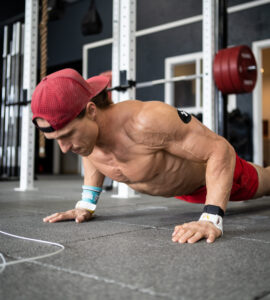
5 PILLARS OF RESILIENCE
1. MOVEMENT
Better Positions & Better Mechanics
Training is more than just getting into the gym and pushing hard. You need effort in the gym to get results, but that must come after you have developed good form and technique. Our bodies and how we move is much like your car. You have to take it in every so often to get tuned up.
You don’t just learn how to do a squat once in your life. You must constantly return to fundamentals and keep improving your movement and positions. Better movement is learned through a process of training at sub-maximal weights and intensities. There has to be plenty of room in your training, ongoing, to develop better positions in your lifts and mechanics in your movements.
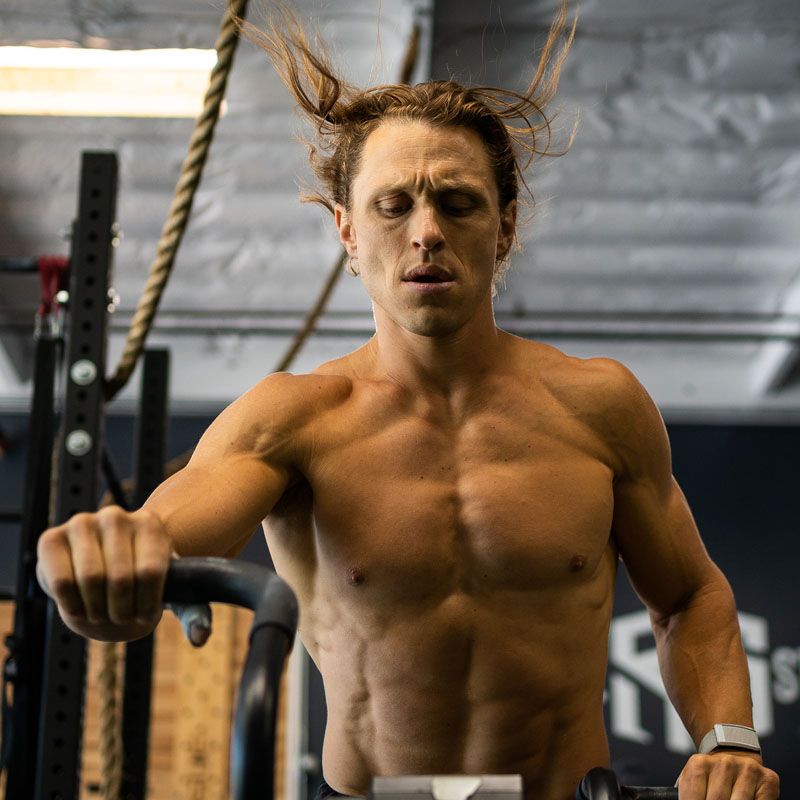
2. TISSUE PREP AND LONG TERM HEALTH
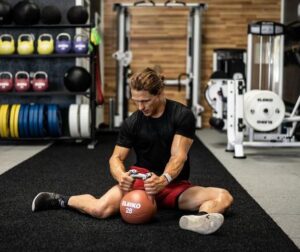
Better Warm Ups and Cool Downs + Short and Long
How we prepare for training and how we recover from our sessions makes a big difference in the health of our tissues. It paves the way for more productive training that can reach proper intensity with less risk of injury. A consistent protocol for warming up and cooling down is essential.
Also, our muscles contract at different lengths depending on how we move our bodies. We have short-range and long-range contractions, and both are important. We must train muscles when they are fully stretched (think DEEP SQUATS). And we must train muscles when they are in their shortened ranges (think LOW STEP UPS). If we take care to balance those two we will be much more physically resilient.
3. VARY YOUR LOADING APPROACHES
Time Under Tension + 30-85% Loading Ranges
There are many ways to achieve intensity in your training. Sure, you can load up the bar with as much weight as you can lift and then try to squeak out 1-2 reps. Seeking maxes on small sets of 1-3 is a common, but flawed way, that many people lift for intensity. If you don’t compete in a sport that demands maximal lifts (Olympic Weightlifting, Powerlifting) the risk isn’t worth it.
Instead, learn methods for expressing a high degree of effort in the gym that are inherently safer. Two of those approaches are lifting in the 30-85% of maximum training zone, and using time under tension. You can in fact build muscle with weights that are anywhere between 30-85% of your maximum safely. And when we manipulate time under tension (TUT) we can change the intensity of our lifting.
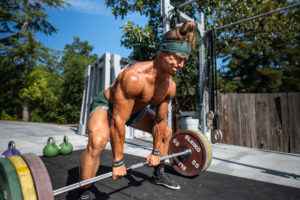
A squat that takes 4 seconds to reach the bottom impacts the body differently than a squat that takes 1 second. More TUT can take a sub-maximal weight and suddenly make it quite demanding and intense to lift. Sub maximal weights, time under tension, and higher reps dramatically impact the safety of your training. All while still delivering the intensity needed to make change.
4. HAVE A BALANCED MENTALITY
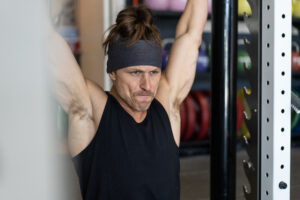
Intensity vs. Quality
Point 3 above was the training science behind managing intensity. Now we have to talk about the mindset around training intensity. As I mentioned, I used to think I needed to push to the max every day. I used to think that by taking a little rest, or backing off on the intensity, I wouldn’t be able to achieve my goals.
Instead, it was the relentless pursuit of intensity each and every day that kept me from my goals. Because I was constantly injured and over training. I had to retrain my brain to appreciate rest days. I had to learn that a session focused on high quality rather than intensity could be just as productive and valuable for me.
There is an optimal balance of intensity and quality for each and every person. But without question, every single person needs to focus the mind on quality training some days and intensity training other days. Making the mental shift to accepting that quality is also a KEY to your health and longevity.
5. NOURISH YOURSELF
Don’t Deprive
The building blocks of our cells, tissues, organs, and hormones come from our food. If we deprive ourselves constantly of food by relentlessly chasing fat loss and being skinnier, then we are depriving our body of essential ingredients. We need these to build strong muscles, joints, and connective tissue. The best training in the world won’t keep you strong and injury-free if you don’t supply yourself with the ingredients necessary to thrive.
This is why I remind myself regularly that my food is here to NOURISH my body. It can be easy to see food as evil in today’s diet culture. We have to remove this, avoid that, cut calories here, and be strict with our food. How we view and think about eating can have a dramatic impact on how resilient our bodies are to injury. Choose nourishment over dieting. Make sure you get the foods in your life that build you up. Protein, fat, carbs, and a whole panel of micronutrients are key.
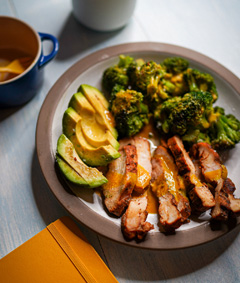
WHERE I'M AT NOW
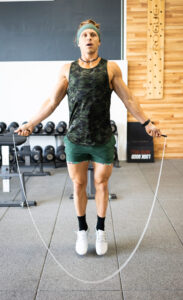
Do I ever feel aches or pains now?
Sure I do. They are mostly very low-intensity pains and aches. They are like little signals to my brain that I’m neglecting one of the pillars that I have outlined here. If pain gets more severe, then it means I’ve been neglecting one or more of these areas for a longer period of time. In either case I have to be listening to my body and recognize that it time to recommit to these principles.
But more often than not these days I feel good. I don’t have pain and I don’t train with a constant fear that something is going to pop or tweak. I have a very supportive nutritional approach. I have checked my EGO most days and train for Quality.
I follow training principles that reinforce good movement. I use loading approaches that make lifting hard and intense without putting maximum weight on my body. And finally, I learn from others constantly about what it means to prepare and maintain healthy tissue for the long haul.
The end result is getting to move the way I want to move, in just about any scenario I find myself in. And having the ability to full express my physicality without fear of injury and set back.
So what is the SECRET?
Well, it isn’t a secret now. Dedicate to these themes, listen to your body, and know when you need to double down on these commitments. Make sure you have the capacity to do what you love, whenever you want, injury free.
RESILIENCE WORKOUTS
Now let’s take those ideas and give you some hands-on ways to try them out for yourself. Here at Functional Bodybuilding we always like to encourage you to learn by doing. So here is how to build stability, strength, and length into your tissues and joints. This is the recipe to become a balanced athlete that is more resilient to injuries.
The goal with strength training that prioritizes physical resilience:
Train the muscles and joints to an adequate range of motion for the activities you want to do in life (Mobility Training)
Train the muscles and joints to be able to produce force through the functional ranges you want to use in life (Strength Training)
Length and Strength meet in a single concept called Stability.
Joint stability means being able to control your joint movement with a full range of motion. And it’s built through the soft tissue and muscles that surround and support the joint. This stability is what keeps your joints safe.
I’ve known this for years, well before I was a fitness coach, and well before any formal education on the subject. Even when I was younger, before I had sustained my college injuries from overtraining, I knew that strength training and mobility training went together.
I felt the benefit of getting stronger through a full range of motion. And I saw what that did to make my joints stronger and more stable. I recall learning how to Romanian Deadlift correctly, and after months I could finally put my palms on the ground in a forward fold. I felt strong and stable, rather than fragile and weak, when I was down there.
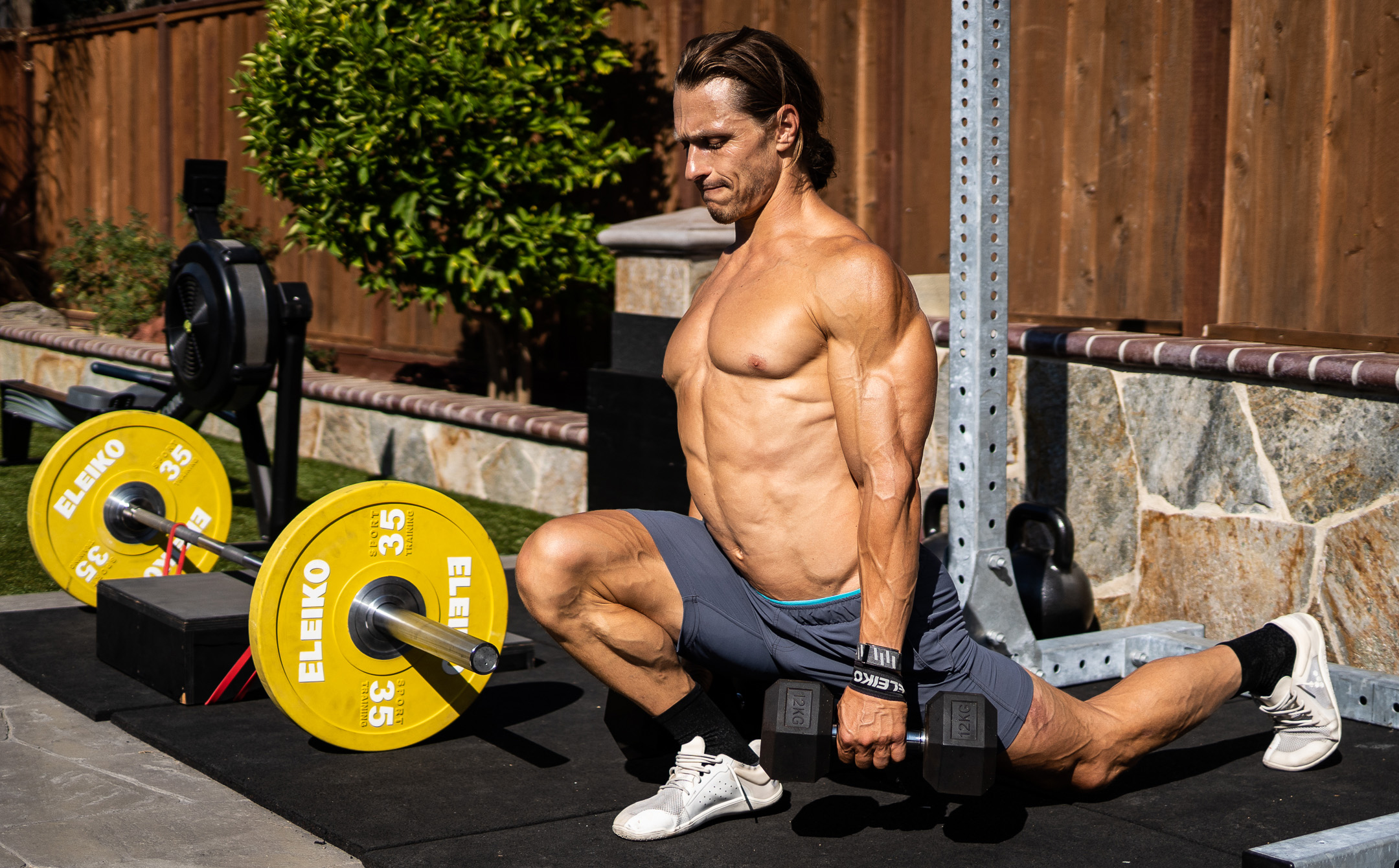
My good friend Ben Patrick (Knees Over Toes Guy) helped me reinforce strength and mobility training in my modern day training applications. The concepts that he used to heal his knees, and make them some of the most resilient on the planet, influenced PERFORM greatly.
Here is some stability training from Perform to try:
Lower Body Stability
Perform PUMP Example
Every 60sec x 9 sets (3 per exercise):
1st minute – Kettlebell Jefferson Curl @2020 Tempo x 4-6 reps (2 second lowering
2nd minute – Left leg Hand-Supported Suitcase Knee Over Toe Split Squat @21X0 Tempo x 6-8 reps
3rd minute – Right leg Hand-Supported Suitcase Knee Over Toe Split Squat @21X0 Tempo x 6-8 reps
Intention – Make sure you pause in the split squat for 1 second at the fully stretched position. Move with control on every set. The total time for each movement should take around 30sec, leaving you with 30sec to rest before the next set. Aim to hit approximately 6-7/10 RPE on each set.
Coach Notes
This combination of movements takes you through a very large range of motion for the hips, knees, and back.
You will get a full knee bend, a big hip extension stretch, and a full posterior chain flexion and extension contraction.
Movements like this are meant to be performed at moderate to lighter loads. This means more control so you can explore your full range of motion and build strength in these positions.
The time under tension (TEMPO) for each of these movements yields about 30 seconds of work and 30 seconds of rest for 9 minutes. This leads to a metabolic stress on the muscle that is useful for building a pump and driving hypertrophy.
Speed, Strength, & Skill
Perform PERFORM Example
PART 1
Every 3mins x 4
Power Clean 1.1.1.1.1 (quickly reset between each rep)
After your 5th rep, immediately move into:
Deficit Strict Handstand Push Up Negative or Strict HSPU Negative @ 41A1 x 5reps
PART 2
3 Sets
Dumbbell Low Incline Bench Press; 32X1; 6-8reps
Rest 2mins
Coach Notes
The first SuperSet of Power Cleans and Handstand Push Ups combines a Speed Strength exercise in the Power Clean with a Skilled exercise. This particular prescription emphasizes stability. Lowering your Handstand Push Up to a count of 4, you will pause at the bottom in a stretched position. This trains the shoulders through a long range of motion with lots of bodyweight strength tension and control.
In Part 2 of this workout, this Bench Press variation maximizes range of motion. The low incline (10-15 degree bench) Bench Press allows a more complete and full stretch of the chest. Additionally, the use of dumbbells allows us to pull the load further down our sides for a more dramatic stretch under tension. The tempo dictates a 2 second pause at the bottom of each rep. You’ll also lower each rep for 3 seconds. These slow speeds and pauses are a recipe for building stability in the shoulder and pecs.
MORE RESOURCES
